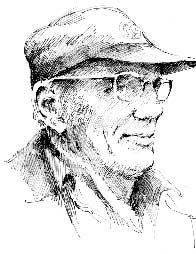Devon
FIRST COLONIALIST ∗ REVENGE
∗ AN ELIZABETHAN PIRATE ∗ FINE ENGLISH CARPETS
Sir Francis Drake – the first Englishman to sail around the world.
DEVON FOLK
Robert Falcon Scott ∗ Stephen Borough ∗ John Davis ∗ Sir Francis Chichester ∗ Charles Kingsley ∗ Samuel Taylor Coleridge
Sir Walter Raleigh
1552–1618
SIR WALTER RALEIGH, showman, writer, poet, adventurer and explorer, was born at HAYES BARTON, a pretty, thatched farmhouse that sits unobtrusively down a quiet lane near Budleigh Salterton. His wit, charm and looks made him a favourite at the court of Queen Elizabeth I, and it was entirely in keeping when he took off his expensive cloak and flung it down in front of the Queen at Greenwich, so that she wouldn’t have to walk through a puddle.
After sailing to America with his half-brother Humphrey Gilbert, Raleigh decided to try and set up a colony there. In 1583 Gilbert attempted to settle a colony at St John’s, in Newfoundland, but his men died or got sick on the journey and they had to return. In 1585 Raleigh sponsored the founding of what would be THE FIRST ENGLISH COLONY IN AMERICA, which he named Virginia, after the Virgin Queen Elizabeth. The settlers landed on Roanoke Island, but this was not a good spot to choose as the land was bad and the local Indians resented them. The colony did not take, and they had to be rescued by Sir Francis Drake in 1586. Raleigh sent another expedition in 1587, but this group, which was meant to try further north, landed at Roanoke once more, and were never seen again. They became known as the ‘Lost Colony’.
Although Raleigh’s colonies did not succeed, they planted the seeds of colonisation, and for that reason Sir Walter Raleigh can justifiably claim to be the founder of the British Empire. This in turn introduced England’s most valuable export, the English language, to the four corners of the world.
Back at home, Raleigh became Elizabeth’s Captain of the Guard, but after Elizabeth died, Raleigh could not hide his suspicions that James I wanted a return to Catholicism and he was beheaded, unjustly, for ‘conspiring against the King’. Before he was led to the block, Raleigh was granted a smoke of his beloved Virginia tobacco – creating the tradition of giving the condemned man a last cigarette…
Roanoke is now part of North Carolina, whose state capital is named Raleigh, in honour of Sir Walter Raleigh.
Buckland Abbey – Home for Heroes
BUCKLAND ABBEY, a 13th-century Cistercian abbey lying in a sheltered valley on the edge of Dartmoor, near Plymouth, resounds with stirring memories of two Devon men who conquered the world for England and Queen Elizabeth.
Sir Richard Grenville
1541–91
Buckland Abbey was bought from Henry VIII in 1541 by Sir Richard Grenville, as a home for his son Roger. Four years later, Roger Grenville was drowned in Portsmouth Harbour while in command of the ill-fated Mary Rose, and Buckland passed to Roger’s son, another Richard, and it was he who later set about making it into a home.
The younger RICHARD GRENVILLE was a cousin of Walter Raleigh, and captained the fleet that took Raleigh’s first colonists to Virginia in 1585. In 1591 he was sent with 13 ships, under Admiral Howard, to capture a Spanish treasure fleet off the Azores.
Buckland Abbey
The Spanish got wind of what was happening and sent out a fleet of 50 ships to protect the treasure. Admiral Howard got wind of this and ordered his ships to flee. Twelve of them were able to up anchor and get away, but Grenville had sick men ashore and refused to abandon them. By the time they were all boarded and ready to leave, escape was impossible.
At 3 p.m. on 31 August 1591, Grenville pointed the bows of his ship, the REVENGE, at the Spanish fleet and sailed right into them. Revenge was the finest ship in the Elizabethan navy and had carried Sir Francis Drake into battle against the Armada, but she was one small ship against a fleet. Wave after wave of Spanish boarders attacked, but were repulsed and hurled into the sea, and the mighty Spanish warships were driven back by constant cannon fire and ferocious spirit. For 15 hours the little English ship fought, until the masts were gone and only 20 men remained alive, with Grenville himself wounded and dying. And still he would not surrender, preferring to sink the Revenge himself than let the Spanish have it.
Finally he was too weak to resist, and the master gunner reluctantly allowed the Spanish to board, on the condition that the survivors were returned to England. Before the ship could be salvaged a storm blew up and took the Revenge to the bottom, to join 14 Spanish ships and 1000 Spanish sailors. Grenville died a prisoner on a Spanish ship, but his last fight cemented in Spanish minds the belief that English sailors were fearless – and inspired a poem by Alfred, Lord Tennyson – The Revenge.
Sir Francis Drake
1540–96
SIR FRANCIS DRAKE was the greatest of all the Elizabethan pirate sailors. Born at CROWNDALE FARM on the River Tavy, just south of Tavistock, he grew up staunchly opposed to Catholicism, and he became an implacable foe of Spain after being double-crossed by the Spanish on a trip to Mexico. He built up a huge fortune plundering Spanish treasure ships in South and Central America, and while Queen Elizabeth I could not sanction his actions, she certainly didn’t disapprove of the booty he won for her. Almost single-handedly Drake wrestled supremacy of the seas away from Spain, draining her wealth and influence. His capture of a Spanish ship carrying secret papers about Spain’s East India trade was an important spur to the setting up of Britain’s own powerful East India Company.
In 1577 he was secretly commissioned by Queen Elizabeth to persecute the Spanish colonies on the west coast of America, and ended up becoming THE FIRST ENGLISHMAN TO SAIL AROUND THE WORLD. He returned in 1581 with enough treasure to pay off the national debt – and purchase Buckland Abbey off Richard Grenville.
Drake was not yet finished with Spain, however. King Philip of Spain, who regarded himself as King of England through his marriage to Elizabeth’s sister and predecessor Queen Mary, began preparing a battle fleet to invade England, and in 1587 Drake sailed into Cadiz harbour and sank 24 of the Spanish warships, infuriating Philip. As Drake put it, ‘We have singed the King of Spain’s beard.’
When the Spanish Armada did finally appear off the English coast in 1588, Drake was reported to be playing bowls on Plymouth Hoe, and the story goes that he insisted on finishing the game before he set sail to confront them – an early example of English phlegm. In fact, his ships couldn’t leave the harbour as the wind was against them, but the bowls legend helped to enhance the reputation of the English sailors as fearless and unflappable – a reputation which, in future years, was to prove invaluable, as England sought to rule the waves in pursuit of her Empire.
In 1595, after a few quiet years at Buckland enjoying his second marriage, Drake went back to sea to harry Spanish possessions in the Caribbean. He became ill while sailing along the coast of Panama and died in his cabin. He was buried in a lead coffin off Porto Bello on 28 January 1596.
Buckland Abbey, which remained the Drake family’s ancestral home until the 1940s, when it was presented to the National Trust, possesses a priceless treasure, Drake’s Drum, which he took with him around the world. It is said that if the drum is sounded Drake will rise again to save his beloved England from her foes.
Axminster
AXMINSTER, one of England’s most ancient towns, is a quiet market town today, but its name is known around the world as the home of the finest English carpets. Axminster carpets were first made in 1755 at Court House, next to the church, by cloth manufacturer THOMAS WHITTY. Inspired by watching a group of French carpet-makers at work in Fulham, he invented and built himself an ingenious new loom, co-opted his children to be his assistants, and got to work on his first Axminster weave carpet.
For the next 80 years Axminster produced the best hand-knotted carpets in Europe, despite only having a small workshop and few staff. One visitor wrote in 1791, ‘I was surprised to find such a paltry place the origin of so much magnificence.’ Rather in the tradition of Italian shoemakers, whenever a new carpet was finished the church bells would ring out and the townsfolk would flock to take a look at it.
Today you can still find Axminster carpets in all the best houses, looking just as good as the day they were made. The biggest and most famous Axminster of them all was that made in 1822 for the Sultan of Turkey’s legendary Topkapi Palace in Istanbul. It measured 74 ft by 52 ft (23 x 16 m) and took 30 men to carry it. Alas, the Topkapi Palace is now a museum and the carpet has vanished, its whereabouts a mystery.
In 1828 there was a disastrous fire at the workshop in Axminster, from which the company never recovered, and in 1835 they went bankrupt. Blackmores, who made ordinary carpets at Wilton, in Wiltshire, bought the rest of the Axminster stock, along with the looms, and began to make the hand-knotted carpets there.
Well, I never  knew this
knew this
about
DEVON FOLK
Robert Falcon Scott
1868–1912
Born in DEVONPORT, ROBERT FALCON SCOTT made THE FIRST AIR BALLOON FLIGHT OVER ANTARCTICA and in 1911 set off on an overland expedition to the South Pole. He reached the Pole on 18 January 1912, only to find the Norwegian flag already planted there by Roald Amundsen, who had beaten him by two weeks. Scott and his four companions perished on the return journey, leaving behind a diary in which the last entry read: ‘Had we lived I should have had a tale to tell of the hardihood, endurance and courage of my companions which would have stirred the heart of every Englishman.’
Stephen Borough
525–84
Born in NORTHAM, near Bideford, STEPHEN BOROUGH became navigator of the Edward Bonaventure, THE FIRST ENGLISH SHIP TO REACH RUSSIA VIA THE NORTH CAPE above Norway and Finland. Somewhat fortuitously, the ship found its way into the White Sea, and the captain, RICHARD CHANCELLOR, became THE FIRST ENGLISHMAN TO SET FOOT IN RUSSIA. Chancellor made his way to Moscow, where he persuaded the Tsar, Ivan the Terrible, to open up trade links with England, and in 1555 THE MUSCOVY COMPANY, THE FIRST ENGLISH JOINT-STOCK TRADING COMPANY, was set up to exploit the new opportunities – Muscovy being another name for Moscow. The port of ARCHANGEL was founded for the company near where the Edward Bonaventure had landed, and Borough was made the company’s chief pilot.
John Davis
1550–1605
Born in SANDRIDGE, near Dartmouth, JOHN DAVIS made several voyages in search of the North-West Passage to China, and the Davis Straits between Greenland and Baffin Island are named after him. He also explored routes around the tip of South America and in 1592 discovered the FALKLAND ISLANDS. He was killed by Japanese pirates off Sumatra.
Sir Francis Chichester
Sir Francis Chichester
1901–72
Born in BARNSTAPLE, SIR FRANCIS CHICHESTER was THE FIRST MAN TO SAIL AROUND THE WORLD SINGLE-HANDED, in 1967, and was knighted by Elizabeth II – with the very sword used by Elizabeth I to knight Sir Francis Drake on his return from becoming the first Englishman to sail around the world.
CHARLES KINGSLEY (1819–75), author of Westward Ho! and The Water Babies, was born in HOLNE, on Dartmoor.
SAMUEL TAYLOR COLERIDGE (1772–1834), poet, was born in OTTERY ST MARY.


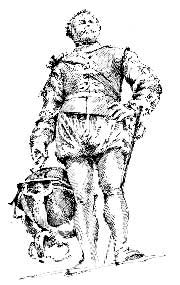

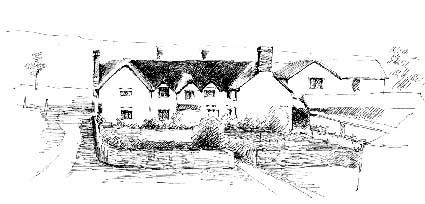

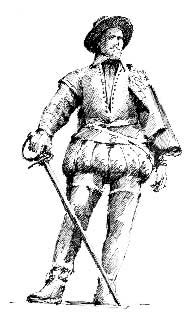

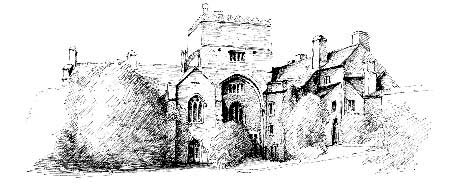


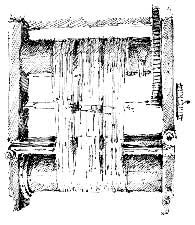
 knew this
knew this 